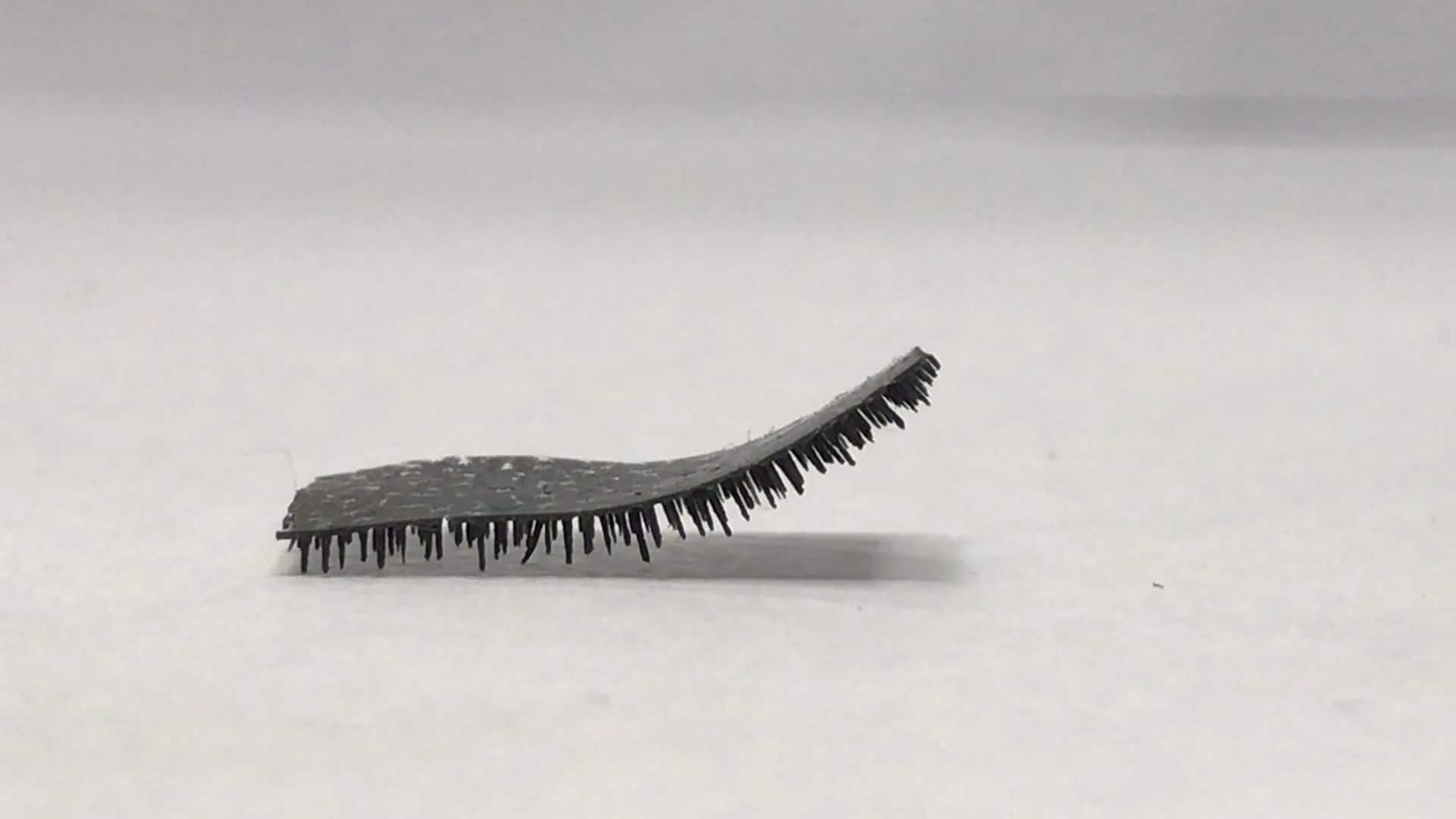
The soft-robot, which is equipped with hundreds of caterpillar-like legs to help it carry heavy loads and traverse obstacles, was developed by a team led by researchers at City University of Hong Kong (CityU). The multi-legged design is also said to reduce friction, enabling the robot to move around areas inside the body that are lined or filled with fluids.
To arrive at their design, the team studied the leg structures of hundreds of animals, including those with 2, 4, 8 or more legs, and focussed on the ratio between leg-length and the gap between the legs.
"Most animals have a leg-length-to-leg-gap ratio of 2:1 to 1:1. So we decided to create our robot using 1:1 proportion," said Dr Shen Yajing, Assistant Professor at CityU's Department of Biomedical Engineering (BME), who led the research.
The robot’s conical legs are 0.65mm long and the gap between the legs is approximately 0.6mm, making the leg-length-to-gap ratio around 1:1. Laboratory tests showed that the multi-legged millirobot has 40 times less friction than a limbless robot in wet and dry environments.
The 0.15mm thick millirobot has been made with polydimethylsiloxane (PDMS) embedded with magnetic particles, which enables it to be remotely controlled with an electromagnetic force.
"Both the materials and the mutli-leg design greatly improve the robot's hydrophobic property. Besides, the rubbery piece is soft and can be cut easily to form robots of various shapes and sizes for different applications," said Prof Wang Zuankai at CityU's Department of Mechanical Engineering (MNE).
During experiments, the team used a magnetic manipulator to move the robot in a flap propulsion pattern and an inverted pendulum pattern, the latter method requiring the device to alternately stand on its left and right feet to swing forward. Furthermore, CityU said the robot can lift one end of its body by 90-degrees to overcome obstacles. Speed can be boosted by increasing the electromagnetic frequency applied.
"The rugged surface and changing texture of different tissues inside the human body make transportation challenging. Our multi-legged robot shows an impressive performance in various terrains and hence open wide applications for drug delivery inside the body," said Prof Wang.
CityU further claim that in laboratory tests the multi-legged millirobot carried a load 100 times heavier than itself, a strength comparable to a human lifting a mini-bus.
“The amazingly strong carrying capability, efficient locomotion and good obstacle-crossing ability make this milli-robot extremely suitable for applications in a harsh environment, for example delivering a drug to a designated spot through the digestive system, or carrying out medical inspection," said Dr Shen.
Before conducting further tests in animals and eventually in humans, the research teams are further developing and refining their research in three areas: finding a biodegradable material, studying new shapes, and adding extra features.
"We are hoping to create a biodegradable robot in the next two to three years so it will decompose naturally after its meds delivery mission," said Dr Shen.
The research findings have been published in Nature Communications, titled "A Bio-inspired Multilegged Soft Millirobot that Functions in Both Dry and Wet Conditions".




Poll: Should the UK’s railways be renationalised?
I think that a network inclusive of the vehicles on it would make sense. However it remains to be seen if there is any plan for it to be for the...